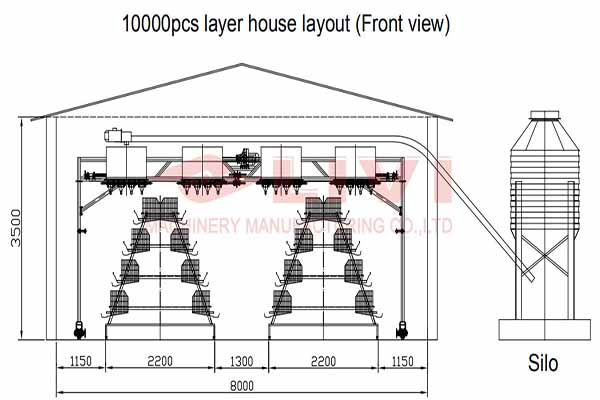Requirements for Environmental Protection Equipment in Tanzania Chicken Farms
Time : 2025-06-27
In Tanzania, the poultry industry has seen significant growth over the past decade. This surge has been fueled by the increasing demand for chicken meat and eggs in the domestic market. As part of sustainable agricultural practices, environmental protection in chicken farms is a critical consideration. This article outlines the key requirements for environmental protection equipment in Tanzania chicken farms, providing a comprehensive guide for poultry farmers to maintain a clean, healthy, and eco-friendly farming environment.
1. Manure Management Systems
Effective manure management is essential in ensuring environmental protection on chicken farms. Here are the key components required for a sustainable manure management system in Tanzania:
– Solid Separation: Chicken droppings must be separated from urine and other liquid waste to minimize environmental impact. This can be achieved through automated or manual methods.
– Solid Storage: The solid manure should be stored in a designated area away from water sources. Airtight, covered storage facilities or bins can be used to reduce the risk of odors and pest infestation.
– Composting: Composting is a natural process that converts solid waste into nutrient-rich compost. This method not only eliminates the risk of environmental pollution but also produces a valuable resource for crop fertilization.
– Land Application: Once composted, the manure can be spread on farmland as a natural fertilizer. This helps reduce chemical fertilizer usage and minimizes environmental contamination.
2. Biosecurity Measures
Preventing the spread of diseases is critical in maintaining the health of chickens and reducing their impact on the environment. Here are the key biosecurity measures to be implemented:
– Sanitation: Regular cleaning and disinfection of farm buildings, equipment, and pathways can minimize the spread of pathogens.
– Access Control: Limiting access to the farm to authorized personnel and ensuring that vehicles and equipment are cleaned and disinfected can prevent the introduction of disease vectors.
– Pest Management: Controlling pests, such as rodents and birds, that can carry diseases or feed on chickens can reduce the risk of disease outbreaks.
– Vaccination Programs: Implementing an effective vaccination program can prevent diseases from spreading among chickens, thus reducing the environmental impact of treating and controlling them.
3. Environmental Controls
Controlling environmental factors on a chicken farm is essential for the well-being of the birds and the protection of the surrounding ecosystem. Here are the key requirements:
– Temperature and Humidity: Poultry need to be housed in an environment with appropriate temperature and humidity levels to maintain their health and minimize the risk of respiratory diseases.
– Ventilation: Adequate ventilation is required to remove odors, reduce moisture, and prevent ammonia build-up. This ensures a healthier living environment for chickens and reduces the impact on the surrounding community.
– Lighting: Proper lighting is important for controlling the reproductive cycle of chickens and maintaining their health. It also reduces stress and enhances overall productivity.
4. Waste Water Treatment
Chicken farms produce significant amounts of wastewater, which must be treated before discharge to prevent water pollution. Here are the key treatment methods:
– Solid-liquid Separation: Separate solid waste from liquid waste to make treatment more efficient.
– Anaerobic Digestion: This method converts organic waste into biogas and digestate, which can be used as a fuel or fertilizer, respectively.
– Aerobic Treatment: Oxygen is used to break down organic matter in wastewater, producing carbon dioxide and water as byproducts.
– Discharge Regulations: Follow the guidelines and regulations set by the Tanzanian government regarding the discharge of treated wastewater into water bodies.
5. Energy Efficiency
Energy consumption in chicken farms can be significantly reduced through energy-efficient practices and equipment. Here are some key measures:
– Solar Energy: Use solar panels to power water pumps, fans, and lighting, reducing reliance on fossil fuels and lowering the carbon footprint.
– Energy-Efficient Equipment: Opt for energy-efficient poultry farming equipment, such as LED lighting and programmable controllers.
– Insulation: Proper insulation in chicken houses can minimize energy loss, thereby reducing heating and cooling requirements.
Conclusion
Ensuring environmental protection on Tanzania chicken farms requires a holistic approach, integrating various strategies and equipment. By implementing the requirements outlined in this article, poultry farmers can create a sustainable and eco-friendly farming environment that contributes to the overall health and well-being of the birds, while also protecting the local ecosystem.












